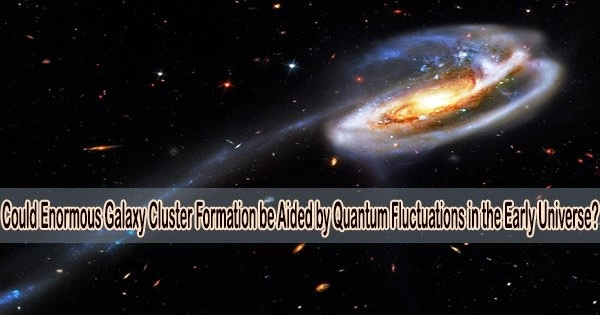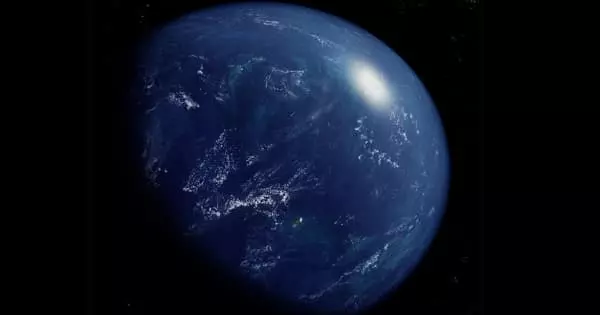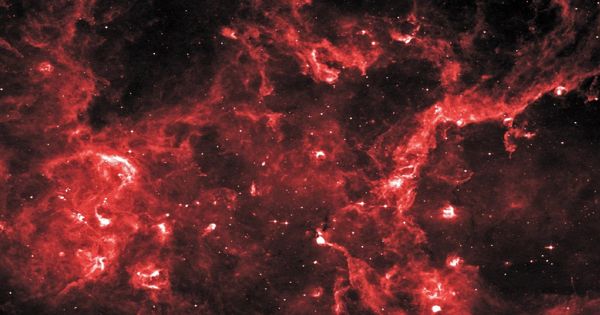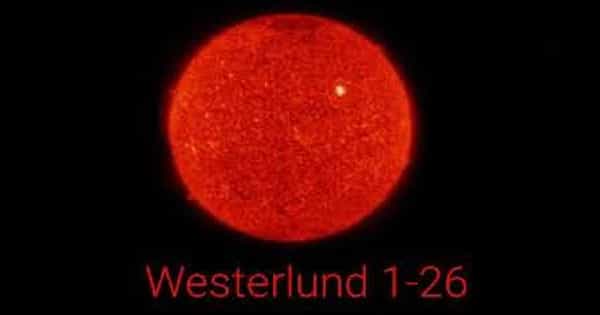For many years, astronomers have worked to comprehend how the universe’s cosmic objects and events form. It has been theorized in the past that the so-called primordial black holes may have originated from primordial quantum diffusion, or quantum fluctuations, in the early cosmos.
In a paper published in Physical Review Letters, researchers at Niels Bohr Institute, Universidad Autónoma de Madrid and CNRS Université de Paris recently explored the possibility that these fluctuations could also affect the creation of even larger cosmological structures, such as heavy galaxy clusters like “El Gordo.”
El Gordo, which was initially discovered more than ten years ago, is the largest distant galaxy cluster yet to be observed with current telescopes.
“The question of how structure formed in the universe might be one of the most ancient ones, but since the early 1980s it has gained a new dimension,” Jose María Ezquiaga, one of the researchers who carried out the study, told Phys.org. “At the time, scientists realized the incredible connection between the smallest and the largest scales, in which quantum fluctuations in the very early universe are stretched by a cosmic inflation to seed the formation of galaxies and large-scale structures in the universe.”
The hypothesis that black holes could emerge in the early cosmos began to take shape as physicists learned more about the linkages between the early and late universe. The first gravitational wave observations of black hole mergers in 2015 sparked new theoretical investigations into the early history of black holes, reviving interest in this field.
“Juan, Vincent and I had been investigating the formation of primordial black holes in the early universe,” Ezquiaga said. “Our key contribution was realizing that when quantum fluctuations are dominating the dynamics of cosmic inflation, this leads to a spectrum of density fluctuations that is non-Gaussian, with heavy exponential tails. In other words, quantum diffusion makes it easier to generate large fluctuations that would collapse into a primordial black hole.”
Luckily, there are many new observations that we can use. In particular, the very recent observations of James Webb Space Telescope seem to indicate that there are many more massive galaxies at high redshift, somethings naturally aligning with our predictions, but we are waiting for astronomers to fully understand their systematics and confirm this ‘unexpected’ population. The other observations that might be interesting for us are number counts of dwarf galaxies with galaxy surveys like the Dark Energy Survey and constraints on subhalos from strong lensing.
Jose María Ezquiaga
After researching the formation of primordial black holes in the early universe, Ezquiaga and his colleagues Juan Garcia-Bellido and Vincent Vennin began to wonder if the same process that produced them an enhanced non-Gaussian tail in the distribution of primordial perturbations could also produce other extremely large cosmological structures.
The idea that this mechanism influences the collapse of larger objects, like as dark matter halos, which will subsequently host galaxies and groups of galaxies, was especially investigated in their most recent work.
“The formation of larger objects early on in the history of the universe could help alleviate some tensions between observations and our standard cosmological model,” Ezquiaga explained. “For example, under standard assumptions, massive clusters like El Gordo may look like outlier, while quantum diffusion make them natural.”
Ezquiaga and his colleagues estimated the halo mass function and cluster abundance as a function of redshift in the context of their current work while accounting for hefty exponential tails. They could then evaluate whether quantum diffusion could lead to an increase in massive galaxy clusters and a decrease in dark matter halo mass.
“Because gravity is always attractive, inhomogeneities will only grow as overdensities will attract mass for their surroundings and under densities will become emptier,” Ezquiaga said. “The question is whether inhomogeneities in the early universe are large and frequent enough to lead to the gravitational collapse necessary to explain the observed structures in the cosmos. Given an initial distribution of perturbations one only needs to press ‘play’ and let the system evolve gravitationally, In our case, we had a previous understanding of the distribution of initial perturbations when including quantum diffusion, so our job in this work was to parametrize in a suitable way this spectrum and analyze the results for the number of massive clusters as a function of redshift.”
According to the researchers’ report, huge galaxy clusters, including the interesting “El Gordo” and Pandora clusters, as well as black holes and average-sized galaxies may have formed as a result of quantum fluctuations in the early cosmos. This would imply that the standard model would not need to be updated to account for new physics in order to explain the observations of galaxy clusters as they are now understood.
“The other very exciting outcome of our work is that it predicts unique signatures that could be tested in the near future,” Ezquiaga said. “In particular, we demonstrate that quantum diffusion not only makes heavy clusters easier to form early on, but also that the amount of substructure should be lower than expected.”
Other theoretical models do not foresee the simultaneous enhancement of huge cosmic structures and the depletion of substructures (such as halos). Despite this, the proposed theoretical explanation for the formation of massive galaxy clusters seems to be consistent with recent cosmological data and has the potential to address additional problems with the standard model.
In their next studies, Ezquiaga and his colleagues would like to paint a more complete picture of the structures in the universe and their formation. This could ultimately also help to fully probe the predictions of quantum diffusion.
“Next for us is fully testing the predictions of this model against observations,” Ezquiaga added. “Luckily, there are many new observations that we can use. In particular, the very recent observations of James Webb Space Telescope seem to indicate that there are many more massive galaxies at high redshift, somethings naturally aligning with our predictions, but we are waiting for astronomers to fully understand their systematics and confirm this ‘unexpected’ population. The other observations that might be interesting for us are number counts of dwarf galaxies with galaxy surveys like the Dark Energy Survey and constraints on subhalos from strong lensing.”
















